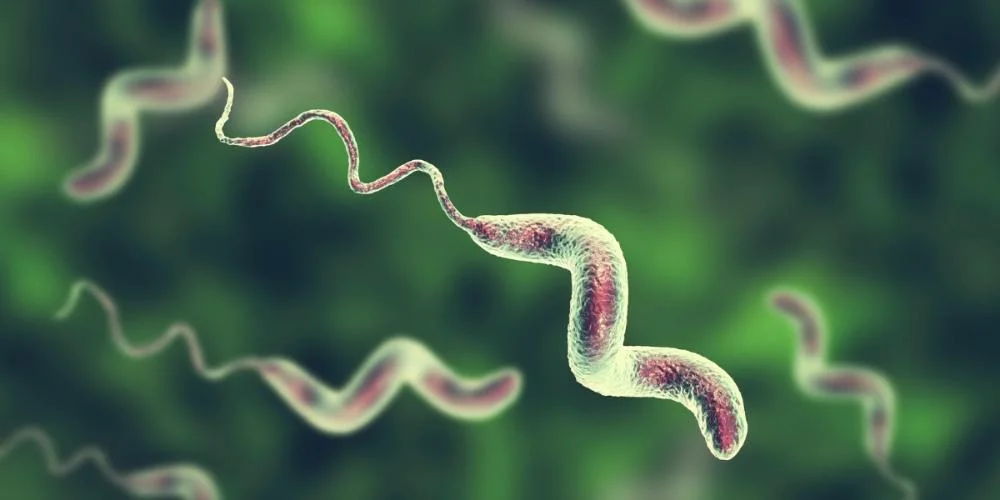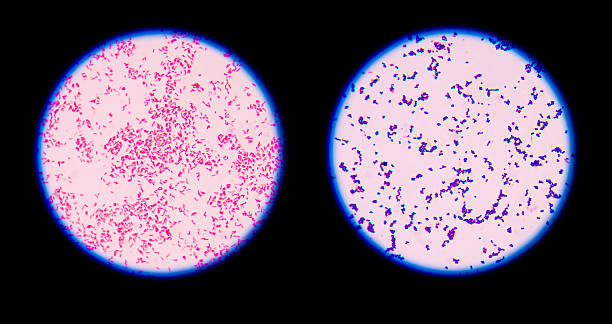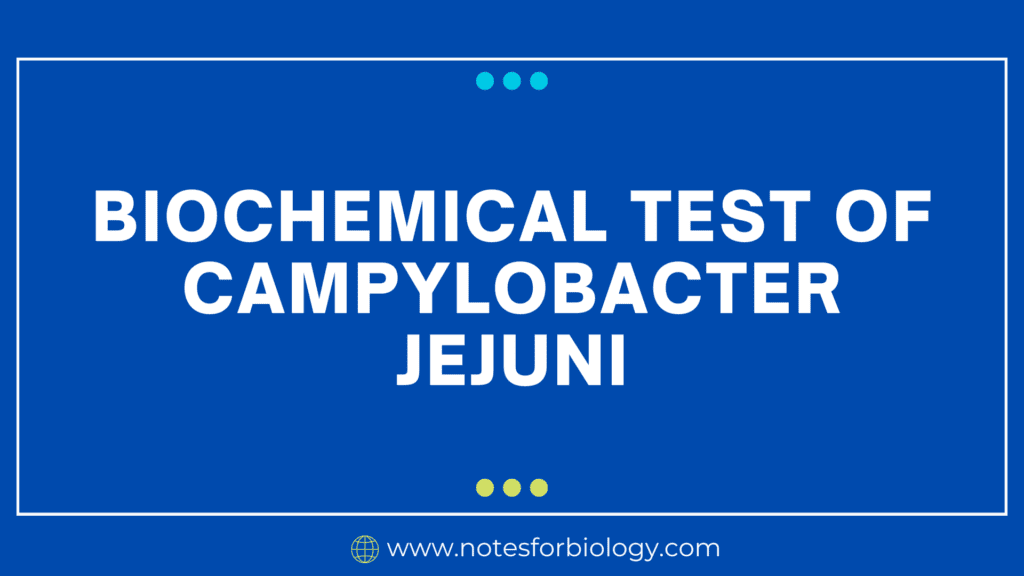Campylobacter jejuni is an important pathogen, accounting for most bacterial gastroenteritis cases worldwide. As a Gram-negative, curved rod bacterium, it is commonly associated with contaminated food and water, especially chicken. Accurately identifying Campylobacter jejuni is critical for effective infection diagnosis and treatment. This procedure entails various biochemical tests and the observation of growth features. These assays, which include oxidase, catalase, and hippurate hydrolysis tests, as well as specific growth conditions, allow for the accurate distinction of Campylobacter jejuni from other Campylobacter species and pathogens, ensuring optimal public health and patient treatment.
Table of Contents
What is Campylobacter jejuni?
Campylobacter jejuni is a Gram-negative, microaerophilic bacterium that is spiral-shaped and motile and is predominantly responsible for foodborne gastroenteritis in humans. Campylobacter jejuni is one of the leading causes of bacterial diarrhea worldwide.

Key tests used for identification of Bacillus subtilis
1. Gram Stain
Result: Gram-negative
Morphology: Curved or spiral-shaped rods
Significance: Gram staining distinguishes bacteria according to cell wall composition. C. jejuni shows as pink (Gram-negative) curving rods under a microscope, which is an important first step in identification.

2. Motility Test
Result: Positive
Description: C. jejuni has a distinct darting motility, frequently referred to as “corkscrew” movement, due to its helical structure and flagella.
Significance: This unique motility pattern distinguishes C. jejuni from non-motile or differentially motile species.
3. Oxidase Test
Result: Positive
Significance: The oxidase test detects the presence of cytochrome C oxidase, an enzyme in the electron transport chain. A good result (color change to dark purple) is common for aerobic and microaerophilic bacteria, confirming their respiration type and narrowing down potential species.
4. Catalase Test
Result: Positive
Significance: The catalase enzyme converts hydrogen peroxide into water and oxygen. A positive test (bubble formation) confirms the presence of catalase, which distinguishes C. jejuni from some anaerobes and bacteria that lack this enzyme.
5. Hippurate Hydrolysis Test
Result: Positive
Significance: This test measures the capacity to hydrolyze hippurate into glycine and benzoic acid. C. jejuni’s positive result (the production of a blue tint after adding ninhydrin) distinguishes it from other Campylobacter species, which do not normally hydrolyze hippurate.
6. Nitrate Reduction Test
Result: Positive
Significance: This test determines the bacterium’s capacity to convert nitrate to nitrite or nitrogen gas. A positive result (red after adding chemicals) indicates nitrate reductase activity, which is useful for bacterial differentiation.
7. Growth Characteristics
Atmosphere: Microaerophilic conditions are needed, necessitating low oxygen levels (about 5% O2) and high carbon dioxide levels.
Temperature: The optimal growth temperature is 42°C, with the ability to grow at 37°C but not at lower temperatures.
Media: C. jejuni can grow selectively on media such as Campylobacter blood-free selective agar (CCDA), Skirrow agar, and Butzler agar.
Significance: These growing conditions make it easier to distinguish C. jejuni from mixed bacterial populations.
8. Hydrolysis of Sodium Hippurate
Result: Positive
Significance: Confirms the presence of the enzyme that hydrolyzes hippurate, which is a reliable way to identify C. jejuni among Campylobacter species.
10. Antimicrobial susceptibility
Response: Typically susceptible to macrolides (e.g., erythromycin) and fluoroquinolones (e.g., ciprofloxacin), though resistance may exist.
Significance: Understanding susceptibility patterns helps to guide effective treatment options for C. jejuni infections.
In conclusion, Campylobacter jejuni is a prominent pathogen that causes a large number of bacterial gastroenteritis cases worldwide. Its identification is based on a combination of biochemical assays and growth observations that emphasize its distinguishing features, including Gram-negative staining, curved rod form, darting motility, and specific enzymatic activity. The accurate detection and discrimination of C. jejuni from other bacteria is critical for effective infection diagnosis, treatment, and prevention. Awareness and comprehension of its epidemiology, transmission routes, and associated consequences highlight the significance of strict food safety and hygiene standards in reducing the public health impact of this ubiquitous microbe.
Frequently Asked Questions (FAQ)
What is Campylobacter jejuni?
Campylobacter jejuni is a gram-negative, spiral-shaped bacteria that is a leading cause of foodborne disease, frequently associated with contaminated poultry.
What biochemical tests distinguish Campylobacter jejuni from other Campylobacter species?
The hippurate hydrolysis test distinguishes C. jejuni (hippurate positive) from other Campylobacter species (hippurate negative).
Related Articles

